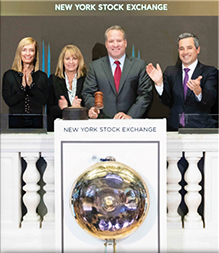When the Tax Cuts and Jobs Act doubled standard deductions in 2018, it had the unintended consequence of greatly reducing the amount of people who could benefit from this famous itemized deduction. Despite this, the United States continues to give the most amount of money per person of any other country to charitable causes. The total charitable amount that has been given has gone down since the change to the standard deduction. You may think that this is an argument against the doubling of the standard deduction, but that’s not the case. This is an opportunity to identify accessible strategies to make the most of your charitable giving from a philanthropic and tax standpoint. So, what strategies can be commonly used to achieve both benefits of giving again? Here are three ideas that you may consider.
First, appreciated property. Appreciated property could be real estate, investments, collectibles, bitcoin, really anything where you have an unrealized gain. For example, you may have bought a stock years ago and have seen great returns in the value of the position since you owned it. If you were to sell the stock, your gain would be taxable at your capital gains rate. If your taxable income takes you above the 12% marginal tax rate, long term taxable gains are taxed to at least 15%. Many charities would be very happy to be given a donation of this stock. Since you are giving the position directly to the charity, you do not pay any tax on the gain and the charity would be able to sell the stock with no tax reported to them. Many times, those who donate will purchase back the security that was given, after 31 days, to increase their cost basis in the position they’ve owned to allow for easier changes to be made to portfolios over time. There are often extreme examples of this concept when a stock is owned that has no cost basis or it’s been unknown to the investor for a variety of reasons. The fair market value of the donation is the amount of the gift and the cost basis does not need to be accounted for. There is also no need to spend time or money on tracking down when the investment was purchased or how dividends and splits had affected basis over time. The gifting of appreciated securities can account for 30% of your Adjusted Gross Income for that year. So, even if you aren’t giving to the level where you would be itemizing your return, you still benefit from not paying taxes on the gains you’ve accumulated in the investment.
Continuing with the strategy of gifting appreciated securities, you can combine that with donating to concepts such as Donor Advised Funds. Consider donor advised funds as a charitable giving savings account. Dollars, securities, real assets, etc. donated to the donor advised fund benefit you in the year you put the money into the account, but do not need to be granted towards charities in that year. This allows individuals using donor advised funds to bunch their contributions to their accounts and use the itemized deduction for charitable giving. They can then spend that account down over time through their normal philanthropic activities and then repeat the process. The same tax limits apply when giving to donor advised funds, 30% of AGI of appreciated securities and 50% of AGI for cash gifts, anything exceeding those limits can be carried forward for a 5-year period.
For retirement accounts, required minimum distributions come up quickly and many times add to taxable income, when it might not be needed. The required minimum distribution age has been increased to 72 after recent changes from the SECURE Act, but the concept of Qualified Charitable Distributions was unaffected. This means that money distributed directly from certain retirement accounts after 70 ½, commonly IRAs, to charitable recipients are non-taxable for up to 100,000 each year. Once required distributions are in effect for the individual, the qualified charitable distribution would also count towards the amount required for that year, but would still not count towards their taxable income. The rate you would normally pay on taxable income would effectively be the percentage deduction for the money given to charity through qualified charitable distributions.
By crafting a charitable strategy, you can maximize the amount of your charitable gift, minimize your taxes, and greatly benefit the groups who could use the support. Giving is first and foremost from the heart, but when we can give wisely, we can help ourselves too. As always, be sure to consult with a fiduciary financial professional before making any major financial decisions.
Click here to read more of my RetireMint articles. Follow me on Twitter or Linkedin.
This document is for educational and informational purposes only and does not constitute an advertisement or solicitation of any securities or investment services provided Mainstay Capital Management, LLC (“MCM”). This document should not be construed as investment, tax, or legal advice, or a solicitation, or a recommendation to engage in any specific strategy. MCM is an independent investment adviser registered with U.S. Securities and Exchange Commission. MCM specializes in workplace savings plan portfolio management and retirement planning advice for active employees and retirees. This document was prepared by MCM primarily based on data collected and analyzed by MCM. The opinions expressed herein are those of MCM alone and are for background purposes only. MCM does not purport the analysis to be full or complete or to constitute investment advice and should not be relied on. In addition, certain information contained herein or utilized to draw the conclusions contained herein has been provided by, or obtained from, third party sources. While MCM believes that such sources are reliable, it cannot guarantee the accuracy of any such information and does not represent that such information is accurate or complete. All materials and information are provided “as is” without any express or implied warranties by MCM. MCM charges its fee based on a percentage of assets under management, which creates an incentive and conflict of interest to increase assets in that account. Furthermore, MCM has two different fee schedules, and therefore has a conflict of interest when assets or accounts move from the lower fee schedule to the higher fee schedule. Opinions expressed are subject to change without notice and are not intended as investment advice or to predict future performance. Consult your financial professional before making any investment decision. Please see MCM’s Form ADV Part 2A and Form CRS for additional information.







